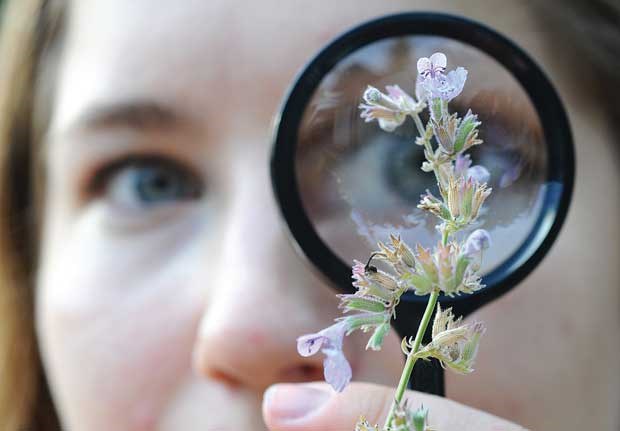One of the most important skills any gardener can have is the ability to diagnose plant health.
Most plant health issues can be attributed to improper growing practices that place plants under stress, leading to the externalization of various symptoms. Pest and disease attacks are a good example of symptoms that appear as a result of the wrong plant in the wrong place or improper growing practices. The symptom is not the problem; the underlying growing problem is usually the issue that must be resolved to cure the symptom.
Drainage problems, for example, cause plant leaves to yellow or the branching to become stunted. Poor drainage also leads to poor flowering and branch death. However, some stem diseases cause symptoms that are similar to poor drainage, so determining whether the problem is poor drainage or stem disease attack requires some experience.
Pest attack is usually easier to diagnose than growing or disease issues. Weevils, for example, leave behind the telltale sign of small, irregular notches at the edge of the leaf. But just because there are notches in the leaf does not mean the pest attack is current; it may be old damage. Another example of pest attack can be seen from aphids that cause leaves to become twisted, cupped, puckered or malformed. Aphids also excrete their waste onto the leaf surfaces which allows a fungus called sooty mold to grow on the waste turning the leaves blackish and sticky. However, very similar symptoms can be caused by scale (soft and hard shell scale) insects that suck sap from the bottom of the leaf or from stems.
To further complicate plant health diagnosis, nutrient deficiencies or excesses can look similar to some types of pest and disease attacks and growing related issues. For example, nitrogen deficiency appears as a yellowing of the older leaves, but drought stress can look similar. Most nutrient related problems are directly relatable to soil health and soil pH. For example, yellowing between the leaf veins can be a sign of magnesium deficiency which some people address by applying Epsom salts. However, low soil pH will cause interveinal chlorosis. Applying Epsom salts only addresses the symptom not the problem of low soil pH.
The real long-term cure is to apply dolomite lime to raise the soil's pH, curing the yellowing problem. Dolomite also contains magnesium so by applying lime, even to rhodos and camellias, the lime will address the lack of magnesium in the soil and it will raise the soil's pH for a long-term cure.
Applying those types of diagnostic techniques may be confusing to some people but evaluating any plant's health comes down to evaluating some basic heath indicators before moving onto more detailed indicators. Before I outline some basic plant health diagnostic techniques, it must be clearly understood that plants are highly variable and adaptive organisms and their growth response is directly related to the health of the soil and the environment they grow in. Therefore the same plant can look slightly different depending on where it's growing. To evaluate any plant you must first know what a healthy example of the species looks like in order to make an evaluation or comparison. As well, fertilizer application does not necessarily make plants healthy, fertilizer forces vigorous but soft tissue growth to reveal a luxurious appearance that is predisposed to environmental stress like drought and to pest and disease attack.
The following plant health diagnostic techniques can be easily applied by most people to determine a basic level of plant heath: Look at the leaves (or needles), and determine if the leaves are the normal size for the species. The leaves should be a uniform and solid green colour. Is there any yellowing of the leaves? Leaves that are smaller than normal, pale in colour or malformed may indicate a problem. Visually examine the bark and stem to determine if there are any wounds, cracks or bark damage that may indicate decay or disease problems. Bark should be uniformly consistent in colour with no significant
defects otherwise there could be a problem. Check the root system to find root damage, signs of soil compaction or drainage problems. Poor drainage, compacted soil and root damage will affect plant health. Check for broken branches or dead branches. Some branch death is normal for most trees and shrubs but excessive or irregular damage or abnormal branch loss can indicate a plant health problem.
Ultimately, understanding the plant's history, growing practices in use and soil health will provide the best information for plant health diagnosis. And plants suffer from various minor maladies like wind damage or drought stress over time with no significant effect on long term health, so don't overreact when a symptom is found.
Todd Major is a journeyman horticulturist, garden designer and builder, teacher, skills trainer and organic advocate. For advice contact him at [email protected].



